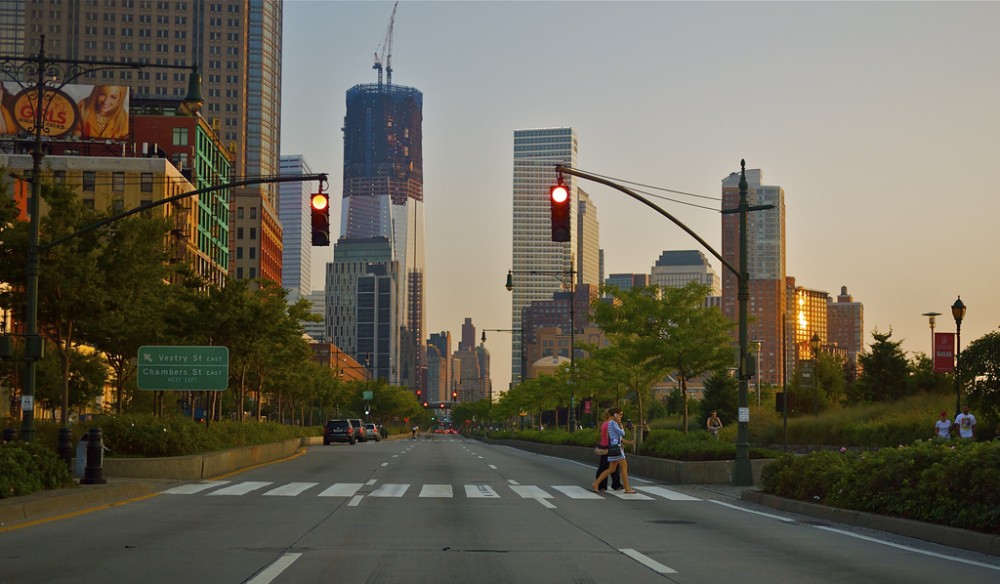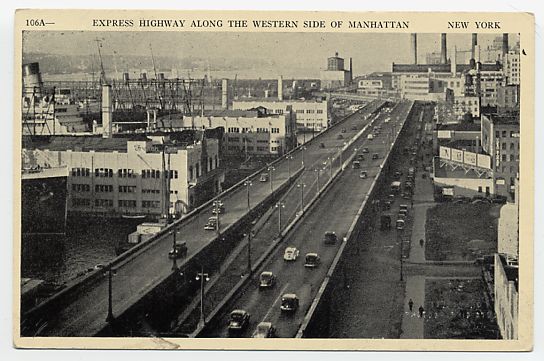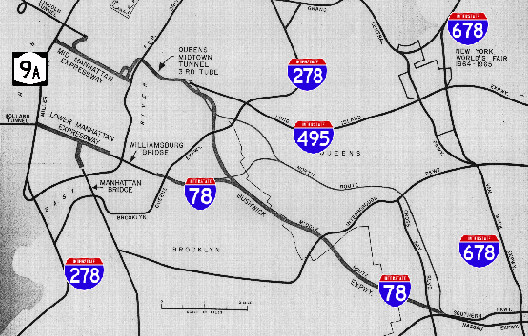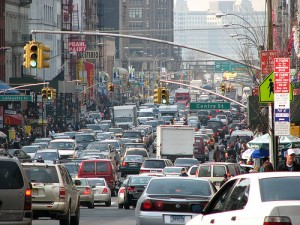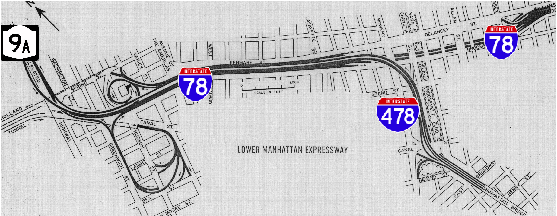The current West Side highway is shown in the header image on the top of this page. It is now a grand boulevard lined with trees and bikeways making it one of the most aesthetically pleasing streets in New York City. Of course, by its name it lies on the west side of Manhattan and is a major thoroughfare on that side of town.
However, the West Side Highway was not always like that. It was once a limited access viaduct that stretched from the World Trade Center to the Bronx. New York City on the west side was primarily an industrial area and having the viaduct proved valuable for business and commuters. It was an expressway that bypassed all the congestion of New York City traffic and was praised for just that.
During the late 60s and 70s maintenance on the viaduct was considerably lacking. New York City as like many other cities was going through rough economic times and could not afford the upkeep of its highways. It came to a point that the west side viaduct was so structurally deficient that a cement truck on its way to fix the road deck collapsed a section of the structure in 1973. How ironic.
The elevated highway was immediately shutdown. Instead of fixing the problem, NYCDOT did not want to invest the $88 million to repair it. The structure remained standing for sixteen years before it was finally demolished in 1989. However, there were plans in 1977 for the structure to be rebuilt, but drivers found other routes to get to where they need to go. City officials did not find the economic and societal costs worth it. Officials instead made it into a grand boulevard in 1999 which made the area much nicer.
The new open area on the water front has revitalized the west side of NYC and has benefited generations of citizens. There used to be an rusting and decaying structure that was the blight of the west side and people did anything to avoid it. Now people, want to live there and walk along the waterfront. Old factory buildings were restored to offer living spaces. The removal of the west side highway has benefited NYC in so many ways and I believe other cities in this country should take this as a good example and apply it to highways that cut off their waterfront.
